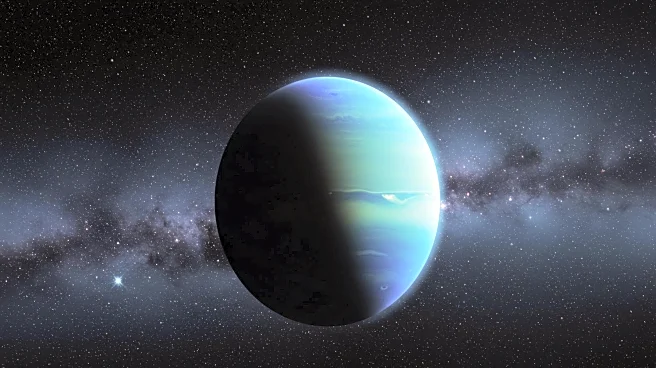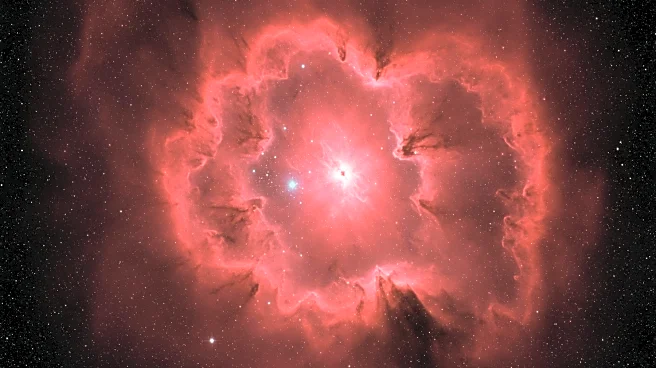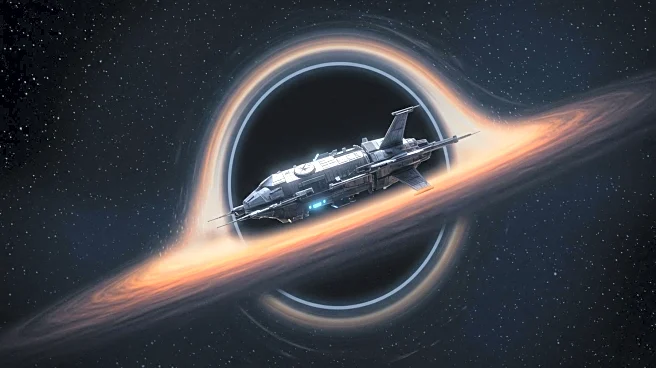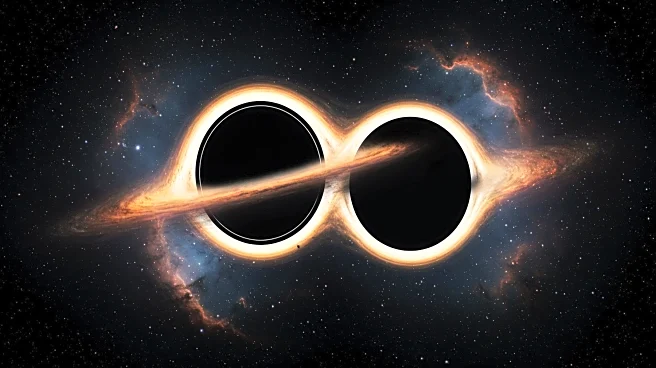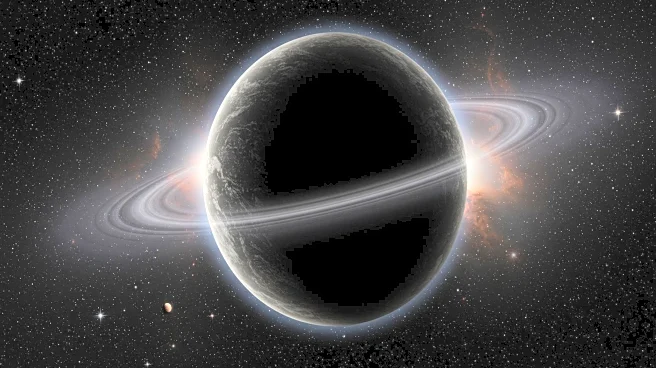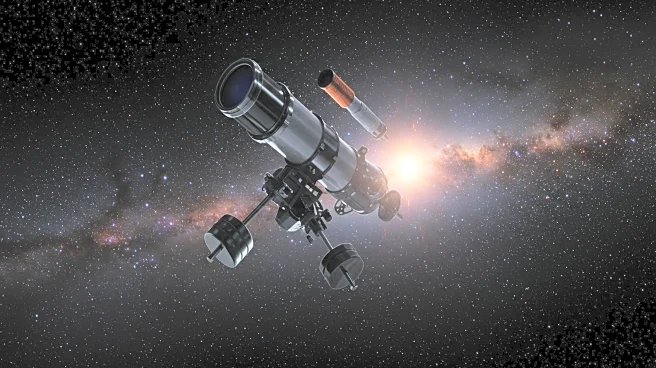What's Happening?
A new theoretical study proposes that tiny black holes, termed 'black hole morsels,' could form during the violent merger of larger black holes, offering insights into the quantum structure of space and time. These morsels, comparable in mass to asteroids, would emit Hawking radiation due to their elevated temperature, potentially detectable by current gamma-ray observatories. The study, published in Nuclear Physics B, suggests that these morsels could provide a natural 'accelerator' for probing physics beyond the Standard Model, including unknown particles or extra dimensions. Researchers used existing data from gamma-ray observatories to place upper bounds on the mass emitted during known black hole mergers, representing the first observational constraints on such phenomena.
Why It's Important?
The concept of 'black hole morsels' could revolutionize the understanding of quantum gravity and spacetime structure. Detecting Hawking radiation from these morsels would provide experimental access to quantum gravitational phenomena, offering insights into physics at energy scales beyond current particle colliders. This research could lead to discoveries of unknown particles or phenomena predicted by theories like string theory. The study highlights the potential of using cosmic events as natural laboratories for exploring fundamental physics, challenging existing models and expanding the boundaries of scientific inquiry.
What's Next?
Future research will focus on refining theoretical models for morsel formation and extending analyses to include realistic mass and spin distributions. Collaboration with observational astronomers is planned to perform dedicated searches in archived and upcoming datasets. The researchers aim to open a new window into understanding the quantum nature of gravity and spacetime, potentially illuminating some of the deepest unsolved questions in physics.


